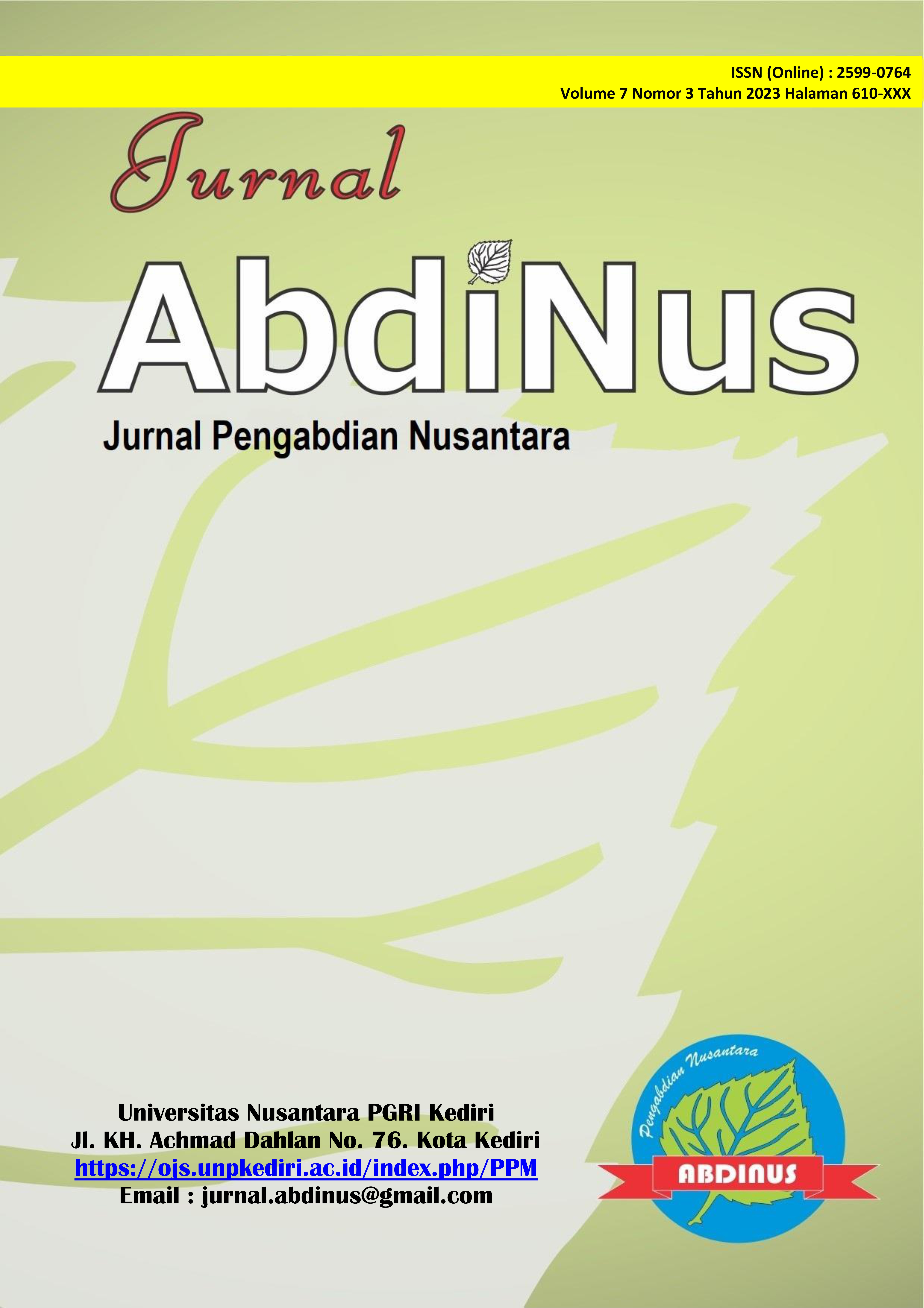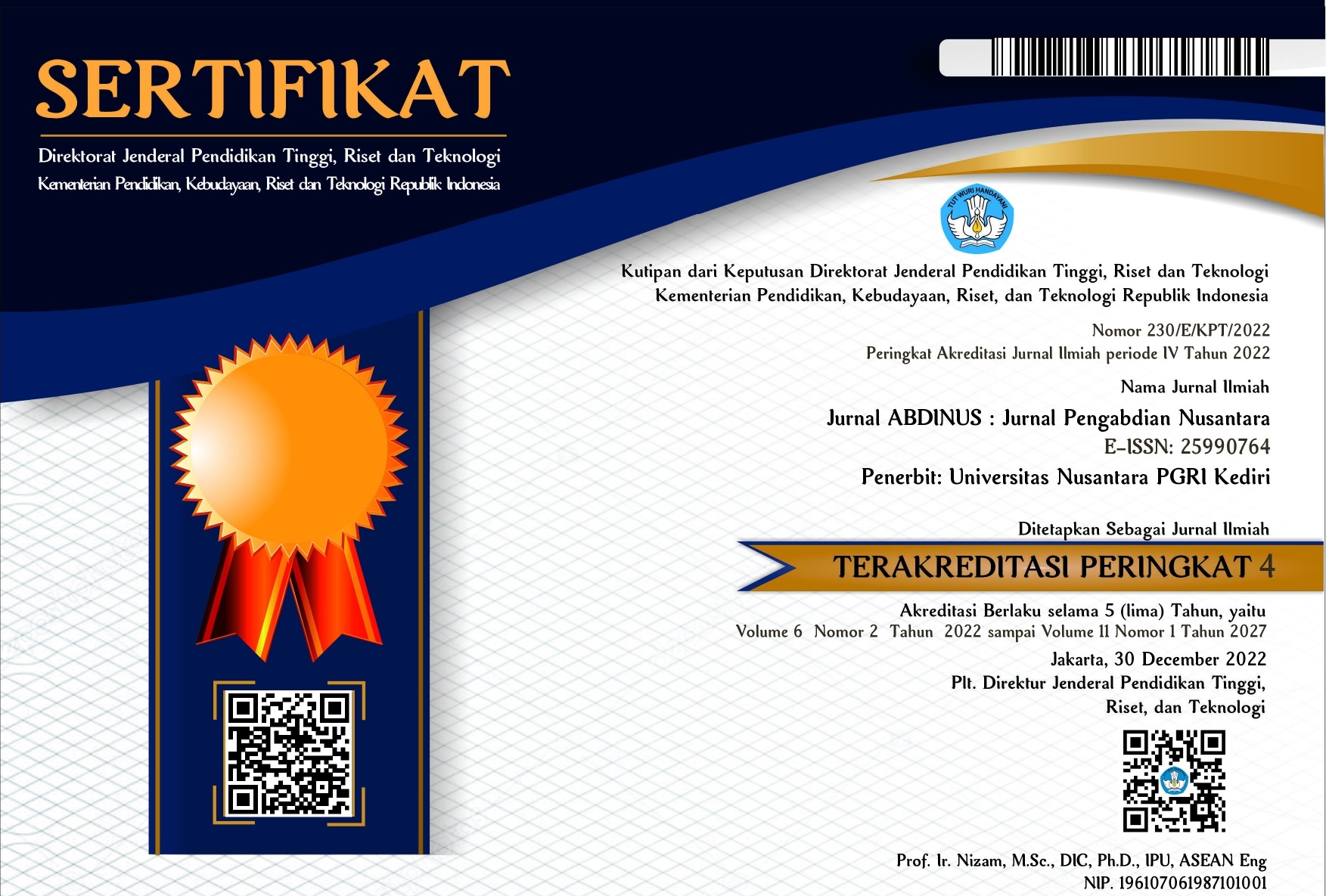Peningkatan Literasi Keuangan pada Siswa SMA Melalui Edukasi Keuangan
DOI:
https://doi.org/10.29407/ja.v7i3.18087Keywords:
Financial literacy, Financial education, Financial inclusionAbstract
Financial literacy is a person's understanding and knowledge of financial concepts and risks and the ability to apply their understanding and knowledge in decision making that can improve welfare. A good level of financial literacy can avoid the public from the risk of financial fraud. Moreover, if it is associated with financial inclusion, the high level of financial literacy will result in high financial inclusion which in turn will have an impact on poverty eradication, increased development and financial stability. Therefore, it is important to conduct financial education to improve financial literacy. This community service aims to increase the financial literacy in high school students. The event participants were 32 high school students in Palembang and the activity was carried out by providing information about financial products. During the activity, participants were asked to answer two questionnaires; before and after presentation to assess the level of financial literacy. The results show that, providing financial education can increase financial literacy in students.
Downloads
References
Atkiinson, A.; Messy, F. (2013). PROMOTING FINANCIAL INCLUSION THROUGH FINANCIAL EDUCATION.pdf. OECD Publishing, 34(34), 1–53. http://doi.org/10.1787/5k3xz6m88smp-en
Bank Indonesia. (2017). Keuangan Inklusif. Retrieved February 17, 2018, from http://www.bi.go.id/id/perbankan/keuanganinklusif/Indonesia/Contents/Default.aspx
Demirgüç-Kunt, A., & Klapper, L. (2013). Measuring Financial Inclusion : Explaining Variation in Use of Financial Services across and within Countries, (Spring 2013), 279–321. http://doi.org/10.1353/eca.2013.0002
Dienillah, A. A. ., & Anggraeni, L. (2016). Dampak inklusi keuangan terhadap stabilitas sistem keuangan di asia. Buletin Ekonomi Moneter Dan Perbankan, 18, 409–430.
Grohmann, A., Klühs, T., & Menkhoff, L. (2018). Does financial literacy improve financial inclusion ? Cross country evidence. World Development, 111, 84–96. http://doi.org/10.1016/j.worlddev.2018.06.020
Han, R., & Melecky, M. (2015). Financial Inclusion and Financial Stability : Can Broader Use of Deposits Boost Resilience of Bank Funding ? *, 0–35.
Lusardi, A., & Mitchell, O. S. (2014). of Financial Literacy : Theory and Evidence. Journal of Economic Literature, 52(1), 1–40.
OJK. (2017). Strategi Nasional Literasi Keuangan Indonesia (Revisit 2017). Retrieved from https://www.ojk.go.id/id/berita-dan-kegiatan/publikasi/Documents/Pages/Strategi-Nasional-Literasi-Keuangan-Indonesia-(Revisit-2017)-/SNLKI (Revisit 2017)-new.pdf
Setiaji, K., Mustofa, U., & Feriady, M. (2020). Peningkatan Literasi Keuangan Syariah Bagi Guru Perbankan Syariah, 4(1), 85–94.
World Bank. (2017). Financial Inclusion. Retrieved February 15, 2018, from http://www.worldbank.org/en/topic/financialinclusion/overview















